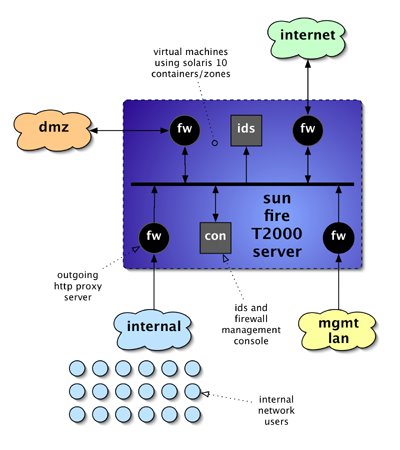the books have very similar titles and are difficult to judge by their covers alone. in fact, MH ('mind hacks') is not a typical hacks book at all. instead of being filled with useful tricks and ideas to improve and enhance the way you work with your mind, it is more of a description of the hacks that are employed by your brain and your mind to make you work. it gives an introduction to the neural machinery behind your mind, with lots of facts and details about cognitive- and neuroscience. it uses these to explain perception, thinking, cognition, optical illusions and other aspects and artifacts of consciousness. this is in essence a hardware manual, showing why and how your mind does what it does, without explaining how to do any of it better.
MPH ('mind performance hacks' - i will refer to the books by their abbreviated titles in the rest of this review) on the other hand is a software users guide. it gives many tricks, or what you would recognize as hacks that you can use to accomplish mental tasks quicker, better and more efficiently. it covers memorization, computation or calculation, organization, creativity, communication and general efficiency. these are all presented in a very practical way, with examples illustrating situations where the hacks can be used with complete instructions for you to follow. they are not rote copying tasks, though, but mostly conceptual tools that should become part of an overall mental toolbox to be used whenever you need to think quickly and efficiently.
both books score well on references and citations for further reading, giving you pointers to all the material you will need to study each concept in much more detail - scientific papers, journal and newspaper or magazine articles, books and websites. there are also excellent websites associated with the books, written by their authors, a mind hacks blog and the mentat wiki for MPH. as o'reilly books, they both have excellent indexes, and there are also some good sample hacks available as pdf downloads from the publisher.
i suspect that many people will have bought the first book hoping that the contents are similar to those of the second, and at the time the second book did not exist, making MH the best book available. however, now that MPH is available it occupies the space that most readers would associate with a hacks series book dealing with the mind in a practical sense, and the title is certainly relevant since all the hacks are about increasing your mental performance, or overclocking your brain.
MH covers a lot of ground, and is a useful jumping-off point for people who want to learn how their mind and brain work. it starts off with a description of the brain, and the methods used by neuroscientists to explore and map the physical structure and activity, such as MRI and PET scanning and EEG readers. there are sections on each of the senses, showing how we perceive things and how we can be tricked by simple illusions. many of the hacks are actually tricks or demonstrations that show off these mechanisms, and can usually be performed while reading the book. they are, however, solely intended to illustrate these points, and most cannot be used for anything else, except to prove that your brain works in the same way as everyone else's!
i did find that i could just dip into the book at random and find something interesting to read, and because it is very well researched, i could always lose myself for hours following up the references and end-notes given for each hack. i definitely enjoyed reading this, and it will appeal to anyone who is interested in or thinking about studying cognitive science, psychology or neuroscience, although it will not turn you into a brain surgeon overnight. i don't think MH really fits into the hacks series, but does make a good and easy to read reference book for the casual reader.
title / mind hacks
author / tom stafford and matt webb
price / gbp 17.50 / eur 22.00 / usd 24.95
pages / 394
isbn / 0-596-00779-5
published / november 2004
an excellent introductory reference to cognitive science and the mind, masquerading as a book of practical tips and tools.
three out of five cats preferred mind hacks
MPH, on the other hand, definitely fits the mould. it is an entirely practical text, and is still easy to dip into. if you want to try and get the most out of your brain, and become a better thinker, this will help you. you won't be able to absorb many of the hacks at first reading, since a lot of them require memorisation or rote learning of techniques, or repeated practice until you can get them just right. i found that it helped to skim through the book, reading the hacks that looked interesting, and noting down those that seemed useful. the book recommends creating a 'mental toolkit' and you should bear this in mind, thinking about where you need to strengthen yourself mentally, and focus on the topics that relate to those areas. once you have noted down the hacks that you want to try and implement, you can then go back over them and read them carefully, one at a time, looking up the end-notes and references.
to get the full benefit of the book will, i think, require a long time, possibly several months, since the hacks often require you to commit to a certain way of doing something that you will need to dedicate time to practice each day. i think of it as a mental exercise program, with the long-term goal of getting mentally fit. this means drawing up a schedule of exercises and routines to go through on a daily or weekly basis, much the same as physical exercise. certainly, there are some hacks that can be understood instantly, with immediate effect, but most are long-term habit and routine changing, and will require (and repay) dedication and perseverance.
MPH is split into several sections: memory, information processing, creativity, maths, decision making, communication, clarity and mental fitness. each of these focusses on a single area, but often gives several different methods for each type of task. different people work best in different ways, and this allows you to choose the hack that best suits your type of personality and use it to its full effectiveness, and there is usually guidance on deciding between these multiple choices if you are unsure.
the topics i am most interested in and will be trying to implement are the memory and mnemonics, shorthand writing, techniques for recording ideas and information, creativity tools and mental fitness and clarity techniques. i will go over these briefly, but the first section of the book is illustrative of the style and content as a whole, and is a good example to go over in detail.
this section contains twelve hacks related to memory. the first is one that i was aware of already - the rhyming method for remembering ten things to take with you when leaving your house. this involves a rhyming list of words relating to the numbers one to ten. each word is then associated with a vivid picture to remind you of an object. you can then go through the ten rhymes easily, bringing the pictures into your head and thus remembering the items. for example one rhymes with gun and i picture firing a gun-toting cowboy with an enormous, oversized stetson hat, thus reminding me to pick up my own hat. this system is only really extensible to ten, and maybe a few more, items. the system i am currently trying to learn for larger lists is the hotel dominic system. this allows ten thousand pieces of information to be stored and recalled instantly. the details are complex, but the operation of the system is simple, and i hope it will be able to supplement my usually pretty flaky memory.
another technique that i am trying to work into my everyday routine is hack number fourteen - write faster with speedwords which is an alternative to shorthand systems like pitman. traditional shorthand has the drawback of using special symbols and cannot be entered into a computer or pda. this system uses only lowercase letters, and is standardized so cannot be misinterpreted like txt abbrv style writing. there is a list of single, two and three letter combinations, along with the words they represent which must be learned, and then they can be used in place of the full spelling. the abbreviations have mnemonic-style notes to aid memorization, often based on another language or a homophone. a useful extension of this hack would be to use the features of some text editors and word processors that allow expansion of arbitrary strings into full words and phrases, greatly speeding up typing.
the sections on creativity and clarity contain many hacks that seem rather 'fluffy' at first glance, however changing the way you think about something and deliberately doing things according to some plan that seems unnatural to you is often a good way to stimulate your mind, and get you thinking along paths that would not otherwise be available. there are a lot of well respected ideas presented, including brian eno's oblique strategies and edward de bono's po which have helped many people generate brilliant ideas. i would encourage trying these hacks out, even if they seem silly, since you will never know if they are helpful until you put in the effort and try. something that i have problems with is stage fright, and hack fifty four gives some interesting ideas on how to use this to your own advantage, which i will try to remember for the next time i have to speak in public.
the last section on mental fitness is a good example of the routine-changing advice given in the book. it suggests many ways of keeping your mind active and heathy, from the obvious, such as playing board games, to the less obvious (eating and sleeping properly) and also explains the mental toolbox concept, which is one of the central themes. the previous chapter, on clarity also contains some intriguing ideas. hack sixty suggests meditation as a way to clear and focus the mind, which i have never really tried before, but would like to learn more about. also, hack sixty one talks about self hypnosis which i am skeptical of, but will also investigate.
one thing about MPH that will particularly appeal to hackers is the code snippets provided. the book contains several short perl programs to illustrate or implement the hacks. these are usually for generating randomness, but there are some innovative programs and the source is freely downloadable from the publisher. there are also pointers to applications (commercial, free and shareware) that can augment some of the hacks, although they are never necessary to use the book. the software is biased towards macintosh os x, however the scripts should work on any operating system that has a perl interpreter.
overall, MPH is an excellent resource, particularly if you feel you might be stagnating mentally, or are suffering from lack of mental stimulation after finishing university or leaving an interesting job. if you put in the time and effort to develop your mental toolkit, MPH will help you keep it up to date and working. i don't recommend all of the hacks to everyone (for instance, not all readers will have the time or patience to learn esperanto!) but picking and choosing what hacks seem right for you, and starting off with something achievable should produce obvious results. treat the book as a do it yourself guidebook combined with an exercise program and you will get the most out of it.
title / mind performance hacks
author / ron hale-evans
price / gbp 17.50 / eur 22.00 / usd 24.99
pages / 330
isbn / 0-596-10153-8
published / february 2006
a great selection of mind expanding tips and tricks that should be an essential part of your mental toolkit.
five out of five cats preferred mind performance hacks
note - i will be writing more about my experiences implementing the techniques from MPH above, and explaining which hacks i found useful, in a few months, by which time the techniques i described above should be completely natural to me.















